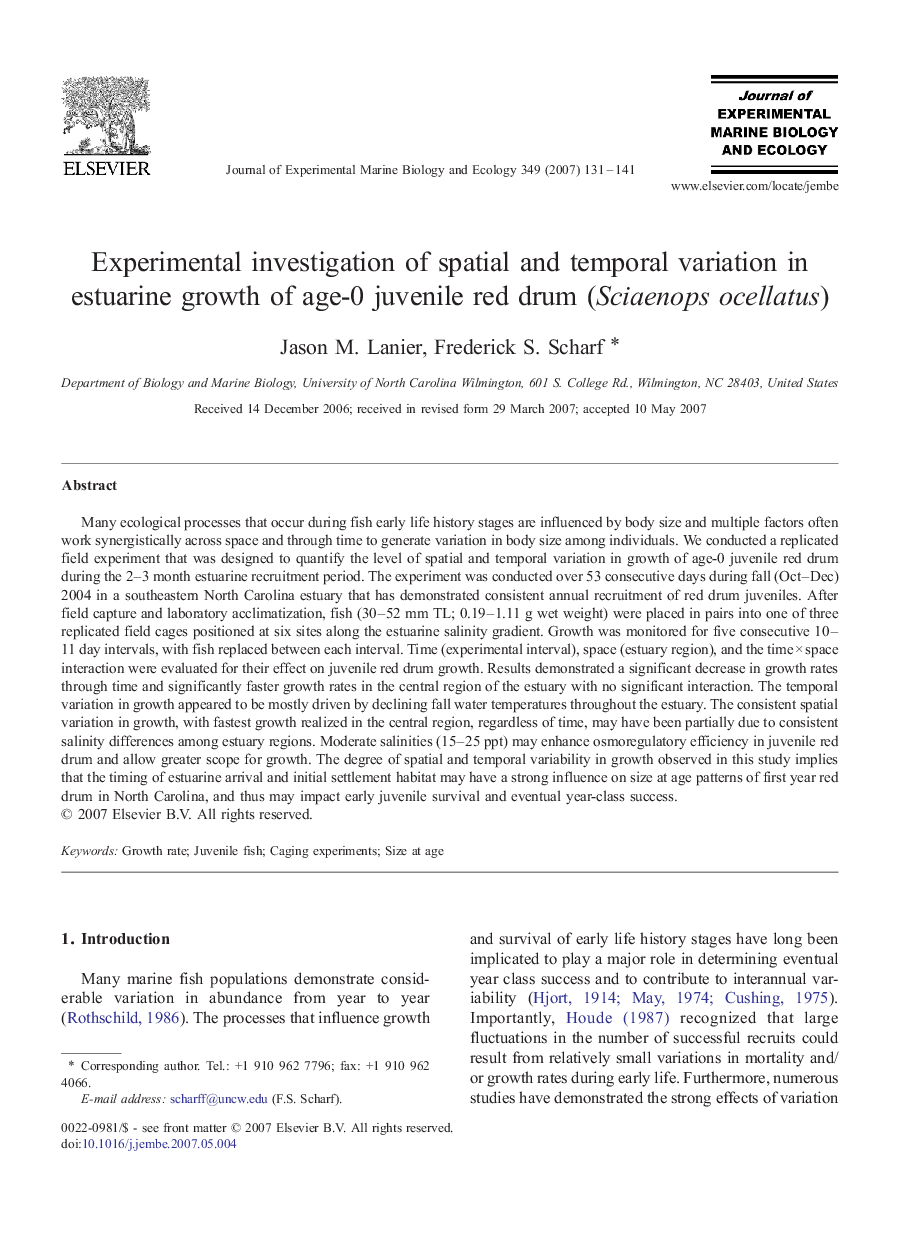| Article ID | Journal | Published Year | Pages | File Type |
|---|---|---|---|---|
| 4397711 | Journal of Experimental Marine Biology and Ecology | 2007 | 11 Pages |
Many ecological processes that occur during fish early life history stages are influenced by body size and multiple factors often work synergistically across space and through time to generate variation in body size among individuals. We conducted a replicated field experiment that was designed to quantify the level of spatial and temporal variation in growth of age-0 juvenile red drum during the 2–3 month estuarine recruitment period. The experiment was conducted over 53 consecutive days during fall (Oct–Dec) 2004 in a southeastern North Carolina estuary that has demonstrated consistent annual recruitment of red drum juveniles. After field capture and laboratory acclimatization, fish (30–52 mm TL; 0.19–1.11 g wet weight) were placed in pairs into one of three replicated field cages positioned at six sites along the estuarine salinity gradient. Growth was monitored for five consecutive 10–11 day intervals, with fish replaced between each interval. Time (experimental interval), space (estuary region), and the time × space interaction were evaluated for their effect on juvenile red drum growth. Results demonstrated a significant decrease in growth rates through time and significantly faster growth rates in the central region of the estuary with no significant interaction. The temporal variation in growth appeared to be mostly driven by declining fall water temperatures throughout the estuary. The consistent spatial variation in growth, with fastest growth realized in the central region, regardless of time, may have been partially due to consistent salinity differences among estuary regions. Moderate salinities (15–25 ppt) may enhance osmoregulatory efficiency in juvenile red drum and allow greater scope for growth. The degree of spatial and temporal variability in growth observed in this study implies that the timing of estuarine arrival and initial settlement habitat may have a strong influence on size at age patterns of first year red drum in North Carolina, and thus may impact early juvenile survival and eventual year-class success.
